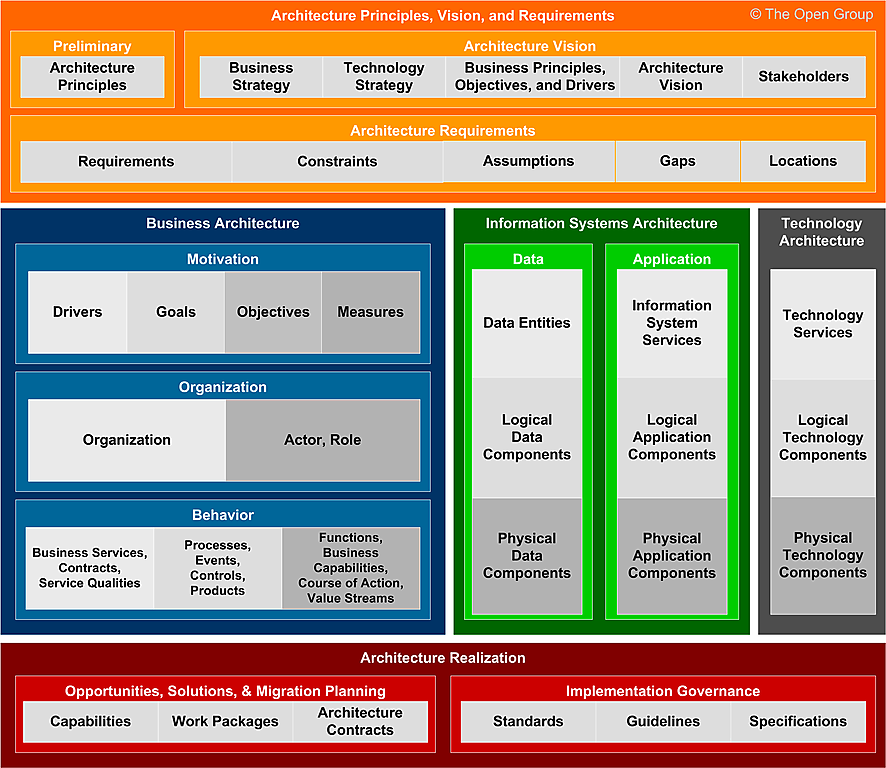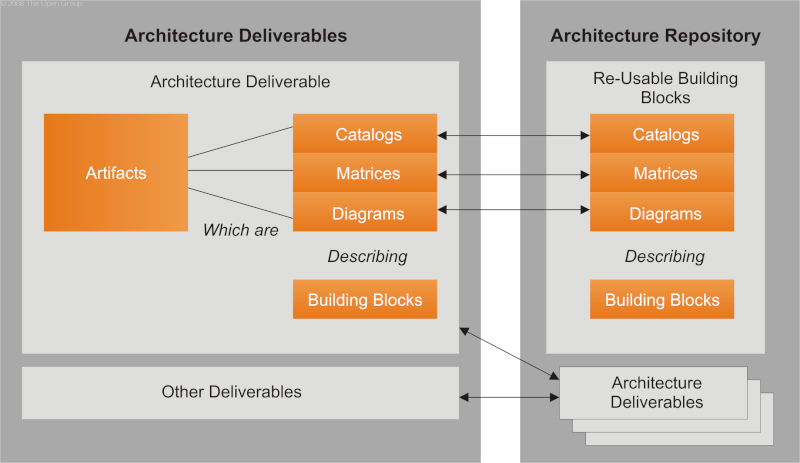Introduction
The TOGAF (The Open Group Architecture Framework) is a widely adopted methodology for enterprise architecture, providing a systematic approach to designing, planning, implementing, and governing an enterprise’s information architecture. One crucial aspect of TOGAF is the Architectural Development Method (ADM) process, which guides practitioners through the creation and evolution of an enterprise architecture. Within this process, a range of outputs, including deliverables, artifacts, and building blocks, play a pivotal role in shaping and documenting the architectural landscape.
TOGAF Architecture Content Framework
The TOGAF Architecture Content Framework serves as a structural model to organize and present the major work products generated during the ADM process. It establishes a consistent and structured approach to categorizing these outputs, ensuring clarity and facilitating effective communication among stakeholders.

Deliverables:
A deliverable is a significant work product that is contractually specified and undergoes formal review, agreement, and sign-off by stakeholders. These represent the tangible results of projects and are often archived upon project completion. In some cases, they may transition into the Architecture Repository, serving as a reference model, standard, or snapshot of the Architecture Landscape at a specific point in time. Examples of deliverables include process flows, architectural requirements, project plans, and compliance assessments.
Artifacts:
Artifacts are more granular architectural work products that provide detailed insights into specific viewpoints of the architecture. Examples range from network diagrams and server specifications to use-case specifications and business interaction matrices. Artifacts are categorized as catalogs (lists of things), matrices (showing relationships between things), and diagrams (visual representations of things). They form the content of the Architecture Repository and contribute to a comprehensive understanding of the enterprise architecture.
Building Blocks:
Building blocks represent potentially reusable components of business, IT, or architectural capability. These components can be combined to create architectures and solutions. Building blocks can be defined at various levels of detail and pertain to both architectures and solutions. Architecture Building Blocks (ABBs) describe the required capability, shaping the subsequent Solution Building Blocks (SBBs), which represent the components used to implement the required capability. The reusability aspect of building blocks enhances efficiency and consistency across different architectural initiatives.
Relationships between Deliverables, Artifacts, and Building Blocks:
The interplay between deliverables, artifacts, and building blocks is crucial for creating a holistic enterprise architecture. Deliverables often encapsulate multiple artifacts, each contributing to a specific aspect of the architecture. Building blocks, on the other hand, provide the foundational components needed to realize the architecture described in the deliverables and artifacts. The relationships between these elements are dynamic and interconnected, ensuring that the enterprise architecture is both comprehensive and cohesive.

Conclusion:
In the realm of TOGAF and the ADM process, understanding the significance of deliverables, artifacts, and building blocks is paramount. These elements collectively contribute to the creation, documentation, and evolution of enterprise architectures, providing a framework for effective communication and decision-making. As organizations navigate the complexities of modern business and technology landscapes, leveraging the TOGAF Architecture Content Framework becomes a strategic imperative for success.